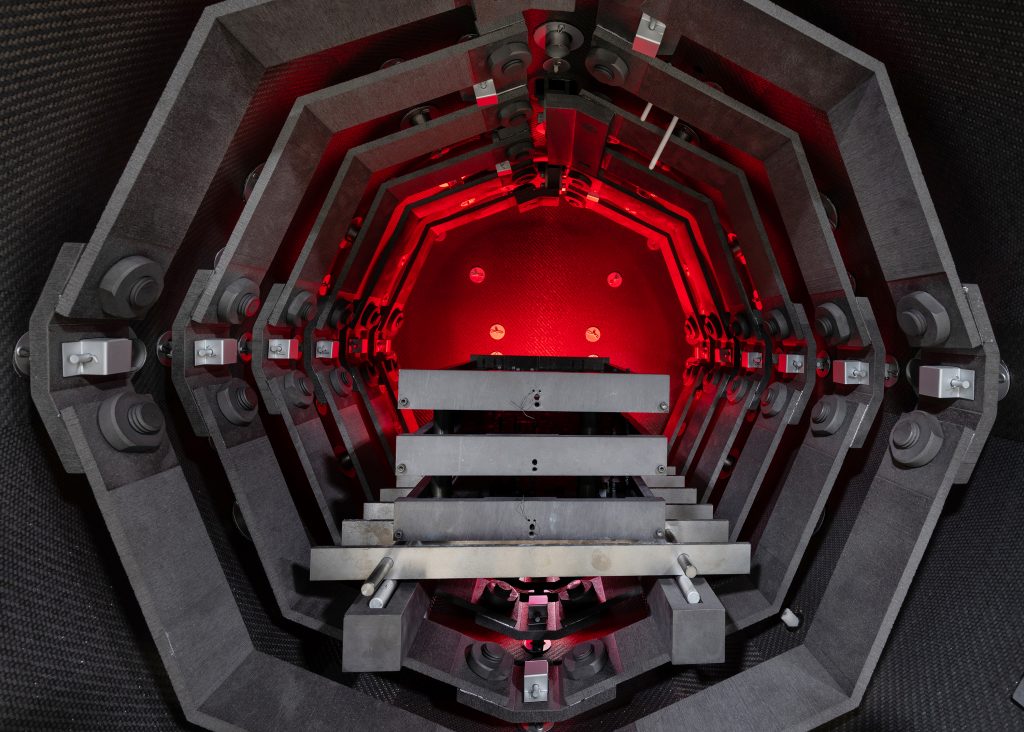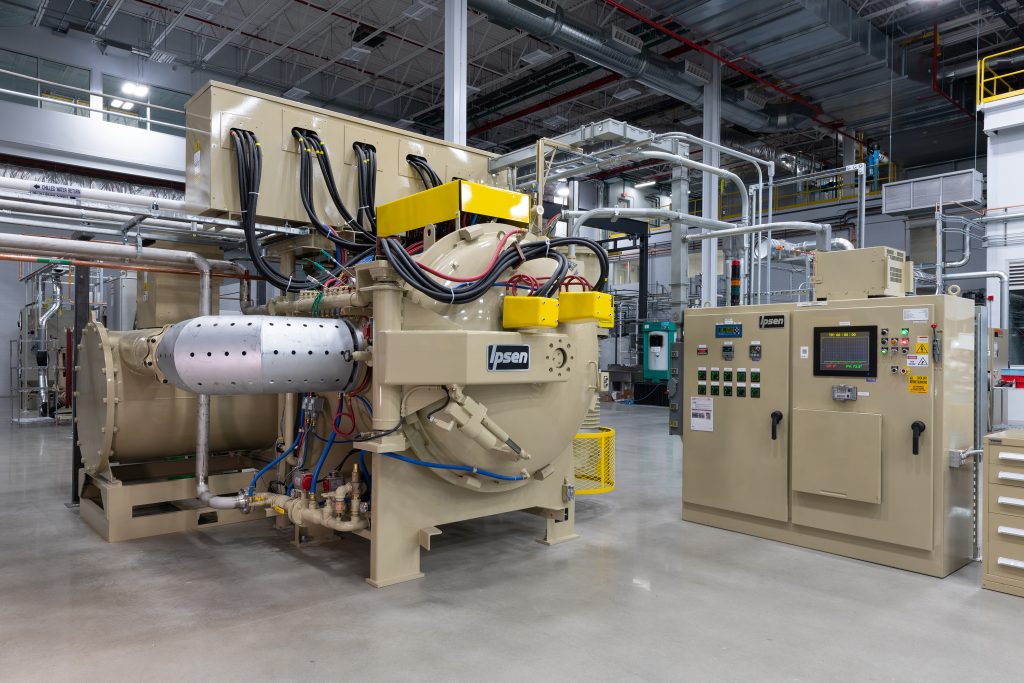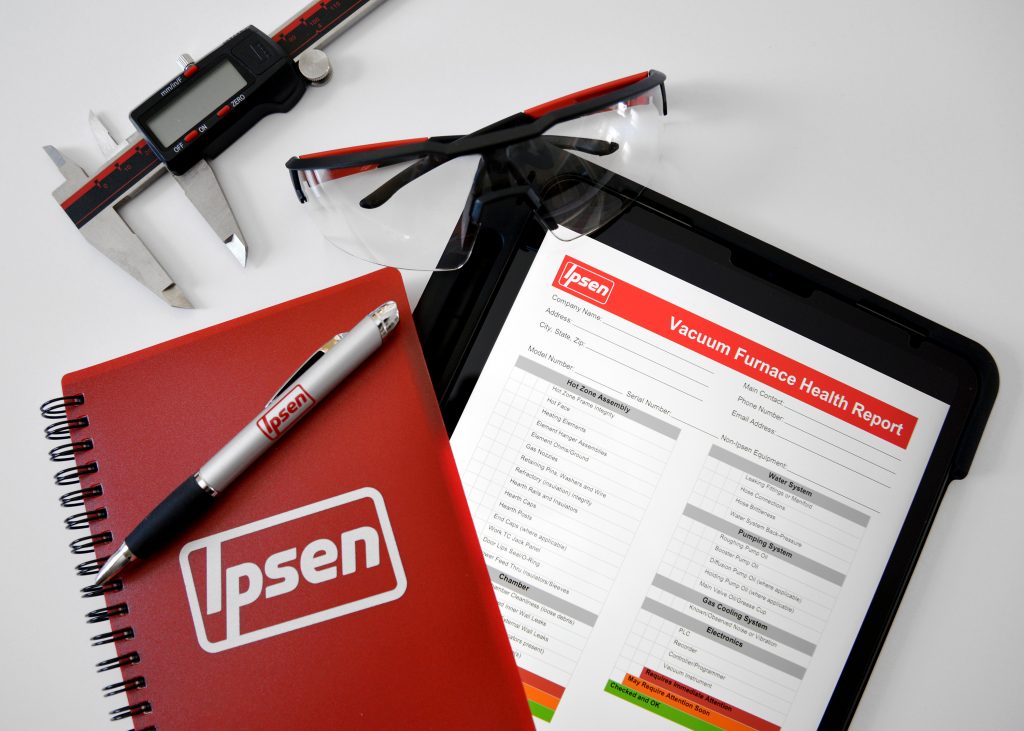 Obtaining precise process and metallurgical results is essential to any heat-treat application. Often, outcomes rely on the performance of a vacuum furnace. When a furnace fails, it leads to unexpected downtime or unplanned expenses. To prevent this costly setback, thermal processing departments should regularly evaluate the condition of their vacuum furnace equipment.
Obtaining precise process and metallurgical results is essential to any heat-treat application. Often, outcomes rely on the performance of a vacuum furnace. When a furnace fails, it leads to unexpected downtime or unplanned expenses. To prevent this costly setback, thermal processing departments should regularly evaluate the condition of their vacuum furnace equipment.
Whether you’re in the aerospace, automotive, energy, medical, tool & die, or any other industry, the goal is to keep your furnace running—and performing reliably—for as long as possible. To that end, Ipsen Customer Service offers free evaluations of any brand of vacuum heat-treating system.
Anyone charged with supervising, operating, or maintaining a vacuum furnace, who is concerned with uptime, should perform the following set of five checks, which closely follow Ipsen’s in-depth evaluation.
1. Hot Zone
Start with a visual inspection looking for broken or missing hardware, such as gas nozzles, element hangers, insulation retaining hardware, and the hearth assembly.
Next, examine the insulation and hot face integrity by checking these three areas:
- On a graphite hot zone, look for any signs the insulation is degrading and causing graphite dust.
- Check for areas where bare steel can be seen through the insulation.
- Where applicable, gently press on the carbon fiber composite (CFC) hot face to see if it is wearing thin.
Generally, these signs are indicative of a past or present air leak. Pitting or rough surfaces on graphite heating elements can also be a sign of potential air leaks. Next, visually inspect the ceramic insulators in the element hangers. If these appear cracked, broken or contaminated, check the resistance to ground for each bank of elements to make sure they are not shorting out.
2. Thermocouples
Once you determine the hot zone components are in functioning condition, it is vital to ensure the thermocouple (TC) readings are accurate, as this is critical to obtaining quality parts.
To check thermocouple accuracy, use a calibrated fluke multimeter to check that the work TC jack panel and control/overtemp TCs are reading correctly, then note the last time the control TC was replaced. It is important to keep good records. A resident system accuracy test (SAT) thermocouple can also give you peace of mind that the control and overtemp TCs are in good working condition and have not drifted. It can also reduce the frequency of costly calibrations or replacement of thermocouples.
Thermocouples used for SAT’s are required by the AMS2750 specification to be extremely accurate (generally +/- 2 degrees F or 0.4% deviation for class 1 or class 2 furnaces). By using an SAT thermocouple, either during a single system accuracy test or as a resident thermocouple, you can get a reference temperature reading to give you a high degree of confidence your control and overtemp TCs are reading correctly.
Those who need to abide by AMS2750E need to re-calibrate (or replace) their control and overtemp TCs every 3 to 6 months depending on the type of thermocouple they are using. Those who maintain a resident SAT may be permitted to use their control and overtemp TCs longer.
For more information on thermocouples and SAT requirements for Nadcap accreditation, view these helpful articles on our website:
- Aerospace Aluminum Brazing and Compliance: Meeting AMS 2750E and Nadcap Certifications
- Obtaining Nadcap Accreditation: Helping You Pass Your Audit 3.
 3. Water Jacket
3. Water Jacket
A vacuum furnace almost always require some type of water supply. Some have flow indicators on the water inlets that can give you a snapshot of whether the water-cooled assemblies are getting good flow. It is important to get a feeling for the integrity of the water jacket as proper water pressure and flow is critical for proper furnace operation.
To check, take a walk around the outside of the furnace, looking for stains or peeling paint on the vessel, which can indicate slow water leaks. Many times these will be at the weld joints and are a sign the vessel may be corroding.
Patches welded onto the outside of the chamber may indicate a past hard water buildup issue. These patches are created after cutting into the chamber to scrape out the buildup. This cut and scrape is done as an attempt to improve water flow through older plugged up jackets. If you see leaks or patches, consider additional investigating or testing to determine the integrity of the water jacket.
Next, check if the vessel is too hot. Most vacuum furnaces are meant to operate with an external wall temperature of 140 °F or below. Over time, a plugged vessel will cause the wall temperature to rise, causing unsafe conditions. This may be an indication that the sediment between the inner and outer wall is blocking flow of the cooling water. A catastrophic failure can occur if the water movement slows to a boiling point.
4. Pumping System
To evaluate the condition of the pumping system, start by determining if there is a preventative maintenance (PM) schedule and whether it has been followed regularly. Next, visually check the sight glass on the booster and roughing pumps to make sure oil levels are normal and the oil does not look “milky,” which can be a sign of excess moisture in the system. For the diffusion pump, determine the last time it was disassembled and cleaned, and if it was ever rebuilt. Then, make sure the diffusion pump oil cup for the cylinder is getting proper lubrication and check the oil level. Keeping up on preventative maintenance can drastically affect how often the pumps are sent out for major rebuild at the pump OEM or a third party.
5. Furnace Electronics
We now arrive at the last stop on our furnace inspection—the electronics, which are often sadly overlooked. Reaching and maintaining proper control and functionality of the equipment is paramount to achieving success in thermal processing.
Furnace controls are frequently subject to the adage, “If it isn’t broke, don’t fix it.” However, this can be a dangerous approach. Like smartphones, furnace electronics such as PLCs, recorders and OITs or controllers, can become obsolete quickly. Once this occurs, replacement parts become scarce and good service techs who know how to work on the antiquated electronics can be hard to find.
Meanwhile, the process of upgrading to new controls can have lengthy lead times, often stretching several months—bringing your operation to a standstill. That’s why proactive planning on this front is crucial, yet often overlooked.
 Best Practices for a Smooth Furnace Operation
Best Practices for a Smooth Furnace Operation
This quick exercise of reviewing your vacuum furnaces per these five recommendations can be an eye-opening experience. You may be relieved to find that all systems are in good working order and that regular maintenance has been followed. Or, you may discover hidden issues, which if not addressed promptly, could lead to degraded performance and costly downtime. For a more in-depth inspection, Ipsen’s free comprehensive furnace evaluation will give you an even better understanding of every aspect of your current equipment’s condition. The free evaluation report will allow you to plan maintenance activities and schedule out capital expenditures well in advance. Ultimately, this free service will ensure many more years of furnace operation with a high rate of uptime, planned scheduling for downtime, and greater accuracy, reliability and efficiency. Take advantage of Ipsen’s free in-depth evaluation of any brand of vacuum furnace. At Ipsen, we are committed to being your partner in success. During this free, comprehensive onsite inspection, an Ipsen Customer Service team member will check all major components of the furnace. The process typically takes under an hour, and Ipsen will provide a written health report with a suggested 18-month maintenance plan.
Let Ipsen Help You:
- Identify and correct problems before they cause costly program delays.
- Set up a regular preventive maintenance plan to avoid emergency equipment breakdowns.
- Improve the reliability, efficiency and overall capability of your furnace.
Ipsen has serviced the industry for over 70 years, so rest assured that we will be here to keep your furnace running for decades to come.












































